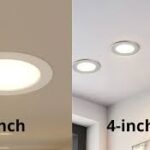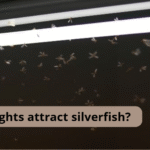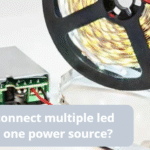Do led lights attract silverfish?
Silverfish are small, nocturnal insects that thrive in dark, damp environments. Unlike moths or flies, they are not strongly attracted to light sources—including LED lights. However, the relationship between silverfish and lighting is a bit more nuanced.
Contents
- 1 Silverfish and Light Sensitivity
- 2 Do Certain Colors of LED Matter?
- 3 Why You Might See Silverfish Near Lights
- 4 Preventing Silverfish (More Effective Than Light Tricks)
- 5 Review – LED Lights vs. Silverfish
- 6 Final Verdict
- 7 FAQs
- 7.1 Are silverfish attracted to LED lights?
- 7.2 Do silverfish avoid light?
- 7.3 Can LED lights help keep silverfish away?
- 7.4 Why do I sometimes see silverfish near my LED lights?
- 7.5 Do certain LED colors attract silverfish?
- 7.6 What actually attracts silverfish?
- 7.7 What’s the best way to prevent silverfish?
Silverfish and Light Sensitivity
- Photophobic behavior: Silverfish generally avoid light and prefer darkness. This is why they’re most active at night and hide during the day.
- Short-term reaction: Sudden light (including LEDs) can startle silverfish, causing them to scurry for cover.
- Long-term habitat: They won’t settle in well-lit areas. Instead, they prefer basements, bathrooms, attics, and kitchens where humidity is high and light is minimal.
Conclusion: LED lights don’t attract them—in fact, constant lighting discourages them from staying in that area.

Do Certain Colors of LED Matter?
- Insects like mosquitoes and moths are often influenced by the wavelength of light.
- Silverfish, however, do not have strong visual attraction to specific light spectrums.
- Their survival relies more on humidity, food sources (paper, starch, glue, fabric), and shelter than on light cues.
So, unlike bugs that flock to UV or blue light, silverfish remain largely indifferent to LED color.
Why You Might See Silverfish Near Lights
- Coincidence: You might spot them near a lamp or LED strip simply because they were disturbed while foraging.
- Heat and cracks: If the light fixture creates a warm environment or has nearby gaps, silverfish may crawl there for shelter.
- Food sources nearby: They may appear near bookshelves, cardboard boxes, or wallpaper that happens to be close to a light.
Preventing Silverfish (More Effective Than Light Tricks)
- Control humidity: Use a dehumidifier or ventilation to keep rooms below 50% humidity.
- Reduce clutter: Silverfish feed on paper, cardboard, and fabric. Store items in sealed containers.
- Seal entry points: Caulk cracks around baseboards, pipes, and electrical outlets.
- Vacuum regularly: Removes eggs and food crumbs.
- Consider traps: Sticky traps or boric acid in hidden spots can help reduce populations.
Review – LED Lights vs. Silverfish
- Attraction: ❌ No, silverfish are not attracted to LED lights.
- Repellent effect: ✅ Light can make them avoid open areas, but they’ll hide instead of disappearing.
- Best solution: LED lighting alone won’t control them. Focus on humidity, food sources, and sealing cracks.

Final Verdict
LED lights do not attract silverfish. They prefer dark, humid spaces and are driven more by environmental conditions than lighting. If you see them near your LEDs, it’s a coincidence rather than attraction. For real prevention, focus on moisture control, cleaning, and sealing entry points.
FAQs
Are silverfish attracted to LED lights?
No. Silverfish are not drawn to LED lights. Unlike moths or flies, they prefer dark, humid spaces.
Do silverfish avoid light?
Yes. Silverfish are photophobic, meaning they avoid light (including LEDs) and hide when exposed to it.
Can LED lights help keep silverfish away?
Partially. Bright lights can make them retreat into cracks, but lights alone won’t eliminate or prevent infestations.
Why do I sometimes see silverfish near my LED lights?
It’s usually coincidence. They may have been startled out of hiding, following food sources (like books, paper, or fabric), or exploring cracks near light fixtures.
Do certain LED colors attract silverfish?
No. Silverfish don’t respond to wavelengths of light like moths or mosquitoes do. Their main drivers are humidity, shelter, and food.
What actually attracts silverfish?
Humidity above 50%
Warm, damp environments (bathrooms, basements, attics)
Starchy materials: books, cardboard, wallpaper glue, fabric, even crumbs
What’s the best way to prevent silverfish?
Reduce humidity (use a dehumidifier or ventilation)
Store paper and fabrics in sealed containers
Seal cracks around pipes, outlets, and baseboards
Clean regularly and remove clutter
Use traps or boric acid in hidden areas if infestations persist
READ ALSO: What color helps with headaches? [3 LED lights therapies]











